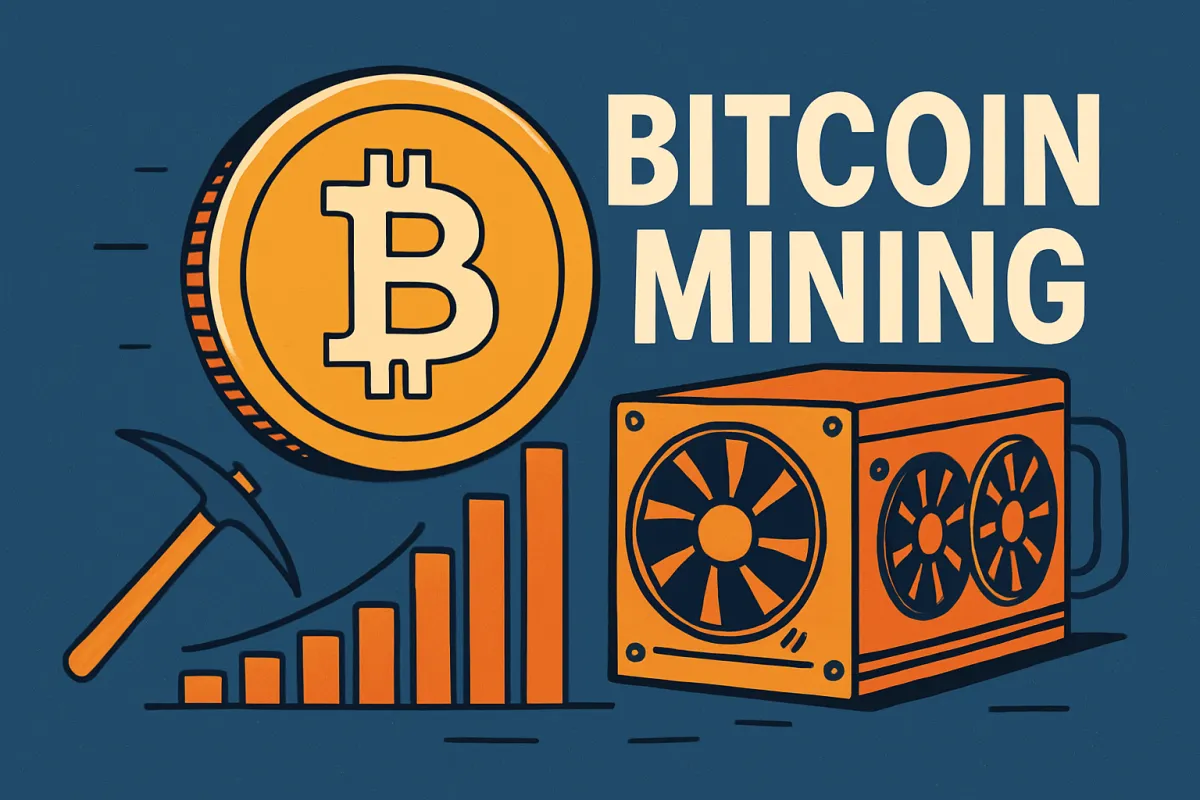
Bitcoin Mining Hits Record Highs Amid Post-Halving Resurgence
Bitcoin mining has seen a resurgence in 2025, defying skeptics who predicted a major downturn after the recent halving event. Despite miners receiving 50% fewer BTC per block, they’ve demonstrated resilience and innovation, pushing the network’s security and performance to new heights. Let’s explore why Bitcoin mining is stronger than ever, what’s driving this growth, and what it means for the future of the network.
Record Production and Miner Resilience
Leading the charge is Marathon Digital Holdings, one of the largest publicly traded Bitcoin mining companies. In May 2025, Marathon announced it had mined 950 BTC—a record monthly total worth over $100 million at current prices. This represents a 35% increase from the previous month and stands as the highest monthly Bitcoin production Marathon has achieved since the halving. Instead of selling, Marathon chose to hold its newly mined bitcoin, bringing its total holdings to over 49,000 BTC. This shows confidence in Bitcoin’s long-term value and a commitment to participating in the network’s security rather than immediately cashing out.
Network Security Reaches All-Time High
Bitcoin’s mining difficulty, a key measure of network security, hit an all-time high in early June. On June 1, the difficulty level adjusted to approximately 126.98 trillion, reflecting the largest amount of computational power ever securing the network. High difficulty ensures that the network remains secure and resistant to attacks, as it would require enormous resources for any bad actor to disrupt the blockchain. This milestone highlights that despite reduced block rewards, miners are continuing to invest in and secure the network—bolstered by Bitcoin’s price staying robustly above $100,000.
Halving Fears Prove Unfounded
Historically, Bitcoin halvings—when the block reward is cut in half—test miners’ resilience. Some predicted that the latest halving would force many miners out of business, leading to reduced security and potential network instability. Instead, miners adapted. Companies like Marathon increased their hash rate through new equipment and operational efficiencies, maintaining or even increasing their share of total block production. For example, Marathon’s operational hash rate nearly doubled year-on-year, illustrating how large mining firms offset the revenue cut with technological upgrades and scale.
Small Miners Still Compete
While large miners dominate, small independent miners occasionally find success, showing that Bitcoin’s decentralization is still alive. In early June, a solo miner managed to find a block and claimed the 3.125 BTC reward plus transaction fees—an impressive feat given the record difficulty. These rare wins remind us that, while the odds are low, Bitcoin’s proof-of-work system allows anyone with the right hardware and some luck to participate.
Energy, Innovation, and Regulation
Bitcoin mining’s rapid growth is closely tied to energy markets. After China’s 2021 mining ban, mining operations scattered globally, with the U.S. (especially Texas) now hosting a significant share. Many miners use renewable energy or partner with energy producers to use excess power, turning a potential waste product into digital value. However, not all governments are supportive. In May, Kuwait cracked down on illicit mining operations, blaming them for electricity shortages and blackouts. This highlights the tension between Bitcoin mining’s global growth and local energy policies.
Sustainability and the Path Forward
The sustainability debate continues to evolve. According to the latest Bitcoin Mining Council report, over 58% of mining energy now comes from renewable sources, making Bitcoin mining greener than many assume. In Texas, miners are helping stabilize the grid by buying excess renewable energy during low demand and shutting down when demand spikes. Meanwhile, other innovative projects like using flared gas to power mining rigs are reducing carbon emissions and creating new revenue streams.
Bitcoin’s Security and Investor Confidence
The record-high hash rate and mining difficulty show that Bitcoin’s security is stronger than ever. As miners continue to invest in efficient equipment and sustainable energy, the network remains robust against attacks. Marathon’s decision to hold its mined bitcoin signals confidence in the asset’s long-term value and helps reduce the circulating supply, potentially supporting higher prices. For investors and everyday users, this is reassuring: the backbone of Bitcoin—the miners—is not only surviving but thriving.
Conclusion
Bitcoin mining is proving more resilient than many predicted. With record production, higher security, and an increasingly sustainable energy mix, miners are playing a crucial role in reinforcing Bitcoin’s status as a decentralized and secure global asset. For those interested in learning more about mining, Bitcoin’s energy story, and how the network remains secure through each cycle, download our free guide at Free PDF. Empower yourself with the knowledge to navigate Bitcoin’s bright future.
Sources:
Marathon Digital record month: https://marathondigital.com/news/may-record-production
Bitcoin mining difficulty all-time high: https://btc.com/stats/difficulty
Kuwait crypto mining crackdown: https://coindesk.com/kuwait-bitcoin-mining-crackdown



